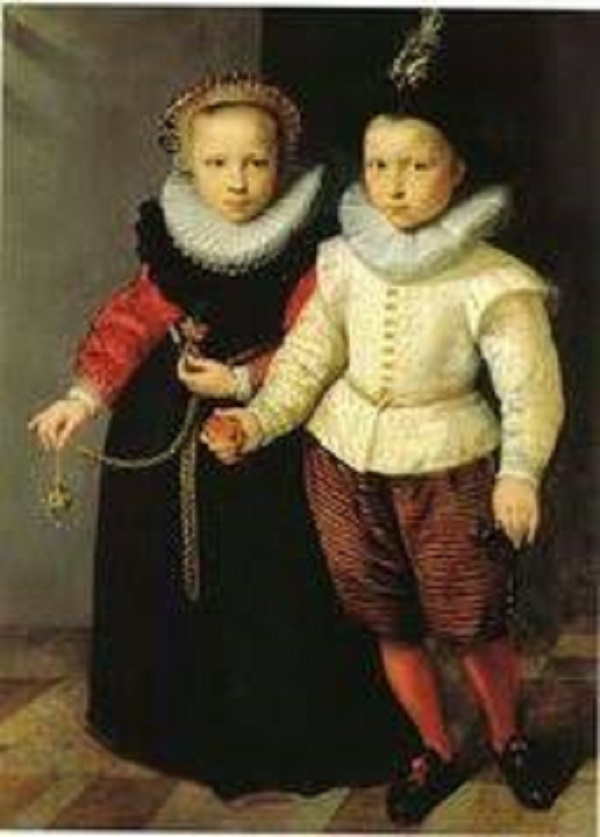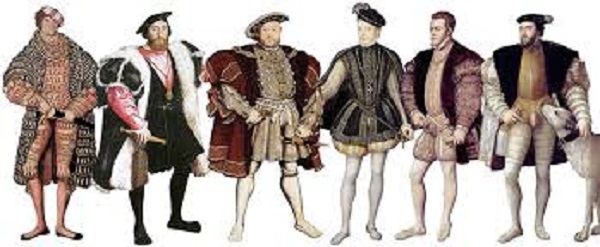In the world of fashion, people that have greater influence and control usually set the styles and trends for other people. In the Renaissance Era, the monarch used to set these trends for both men and women while in today’s era, the style icons are celebrities.
The Renaissance was a time of great change in Europe. One of the most notable changes was the development of new styles in fashion. Renaissance fashion was much more ornate and elaborate than the styles of previous centuries. This was especially true for wealthy nobles and royalty, who could afford to commission expensive clothing made from luxurious fabrics.
Renaissance women’s fashion was characterized by long, flowing gowns with low necklines. Wealthy women would often wear expensive jewelry and fur trim. Renaissance men’s fashion was much more subdued, consisting of dark tunics and hose. Children’s fashion during the Renaissance was similar to adult fashion, except that it was often less elaborate.
The Renaissance was a time of great creativity in the world of fashion. New styles and trends were developed that would go on to influence fashion for centuries to come.
There are many monarchs who have a strong impact on Renaissance fashion, but the Tudor Monarch of England had a major impact on the Renaissance fashion of the 16th century. Of all of them, King Henry VIII and Elizabeth I were the most influential.
What Were the Differences between Rich Women’s Clothes and Common Women’s Clothes as a Fashion During Renaissance?
Wealth and social rank were easily distinguished with the help of precious garments (just as it is today). Renaissance clothing was a public display and would validate your status. Even if you did not have much money, you would be accepted into society if you wore the right clothes and carried yourself in a refined manner.
Noble ladies were often the leading trendsetters in Renaissance fashion. Their dress would include precious jewels, fur cloaks and other elaborate decorations as a sign of their aristocracy and high social rank. However, since fashion items were available to anyone with money, the distinctive meaning for aristocratic Renaissance clothing could be mimicked by the lower classes.

The style of gowns for the Renaissance women changed from time to time but still, their basic style remains the same. Here a woman wears the gowns that consisted of a tight-fitting bodice and a fuller skirt that would reach up to their ankles. The clothing of upper-class women was very clumsy and heavy which restricted their movements, whereas the clothing of lower-class women was much restricted in terms of freedom as well as movement.
Corsets, bum rolls, shifts, stockings, petticoats, farthingales, etc were part of their costume.
What did Children Wear as Fashion During the Renaissance?
Contents
Children were no exception to fashion’s dictates, with little ones tied into the same corsets and doublets as adults. Children’s clothing was very similar to adult clothing. However, their clothing was simpler and made of stronger material. Their clothes were stronger because children don’t stay the same size forever and will need new clothes at some time so it is better to not spend too much on it.

Working class children wore garments made of rough fabric that was possibly handed down from their older siblings. A common girl’s outfit included “a long-sleeved kirtle worn with ample skirts and a rectangular apron and a headdress. Meanwhile, a well-to-do girl would wear a gown with a deep ‘V’ that extends down to the base of her abdomen. It might be laced across the front over a stomacher or kirtle.
What Kinds of Hairstyles, Shoes, and Make-Up Were Worn?
Hairstyles
Women wore their hair with coverings went from the ‘pointed cone’ style with no hair allowed to show, to the more popular light-weight veil type trimmed with flowers or lace. Most women had very long hair and kept it braided. As time passed, a pointed hood-like covering was introduced, called a cap.
A tight-fitted linen cap known as coif or biggins was in fashion alone or either with hats or hoods. Then embroidered and bobbin lace trimmed coifs of English emerged in these periods in the areas of Netherlands and England. Whereas in France and England, a French hood was worn. Widows who were part of mourning wore sheer black veils and black hoods.
Shoes
Shoes were made out of wood in the platform and leather in the slipper. The shoes were very extravagant as was the rest of the outfit. The platform could add height to the wearer and come in a height of up to 13 inches and jeweled ornaments adorned the leather. Some slippers had slashes over the toe which was filled with taffeta. Chopines were high wooden platforms, almost like small stilts.
Make-up
The basic makeup was to have natural or light red hair, red cheeks and lips, pale complexion and white skin. This was considered as ideal as Queen Elizabeth who was in a reign that time had the above-mentioned look.
To enhance their looks further, women wore a layered makeup of white shade on their face which was done using white lead and vinegar. As white lead was very poisonous, women in that era were prone to deaths before 50 years of age. Apart from using makeup, they were bled to take the color of their faces to obtain the pale complexion
To achieve red cheeks and lips, dyes of cochineal, vermilion and madder were used. They used Kohl to darken their eyelashes and to enhance their eye appearance.
How did the Royal Men Dress Differently than the Common Men as Fashion During Renaissance?
Men in the Renaissance period wore four essential pieces of clothing. First, was the camicia or shirt. For upper-class men, the camicia was made of silk or soft fine linens. The camicia was never worn alone, for that only symbolized a working man. Lower-class men’s camicias were made of heavy coarse linen.
A gusset was inserted in the camicia to make it stronger and roomier. Over the camicia was the doublet, which was a close-fitted jacket worn with or without sleeves. The next piece of dress for the Renaissance man was the hose. The hose was attached to the doublet and seamed together at the crotch. The outer-most piece of clothing worn by common-men was the jacket.

In the latter part of the 15th century, the jacket was worn over the shoulders and chest then falling in full pleats and belted at the waist. Footwear was a big part of men’s fashion. The shoes were long, pointed, and generally worn for indoor use only. Leather clogs with wooden soles were worn for outdoor weather. Hats, hairstyles, and accessories were the last essential pieces that finished off the man’s costume.
Sumptuary Laws of Fashion During Renaissance
The laws that regulate the ornamentation, clothing, food, drinks and any other form of luxury while imposing a hierarchy of consumption. It restricts certain ranks like middle class or lower class persons from wearing specified clothes, ornaments or garments. Even there were rules set for Royal families and upper class.
These Sumptuary laws can trace their history dating back to antiquity, but they grew rapidly in the middle ages and renaissance. During the reign of King Henry VIII, the first parliament was set and passed the sumptuary law. The Act was further passed on even in the reign of Queen Elizabeth. Heavy penalties were imposed on those who break these laws and rules.
King Henry made restrictions on the type of fabric and its length, While Queen Elizabeth took it further as to what could be worn by what class of people. These were although restrictions but followed many purposes both covert and overt. The purpose it served was to cut on and save on the extra amount that was spent on clothing for the sake of fashion and status.
More info on- Elizabethan era Clothing Law for Women, Clothing Styles of different Classes, Hairstyles, Clothing in Elizabethan England